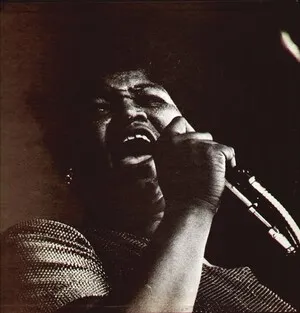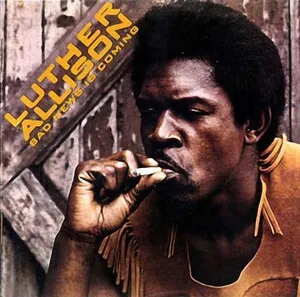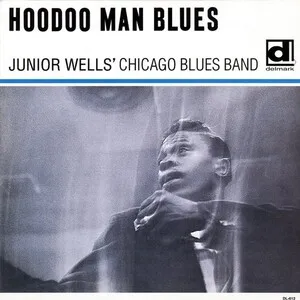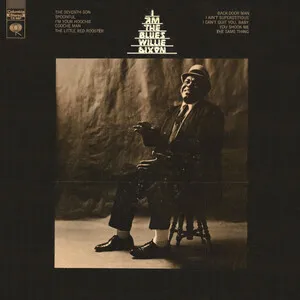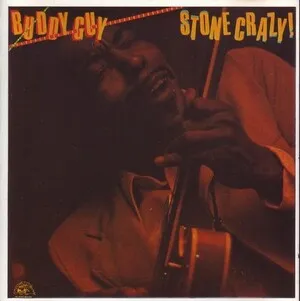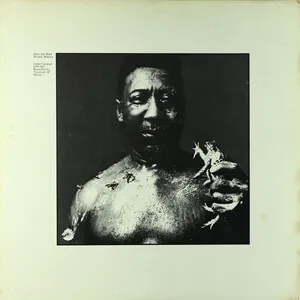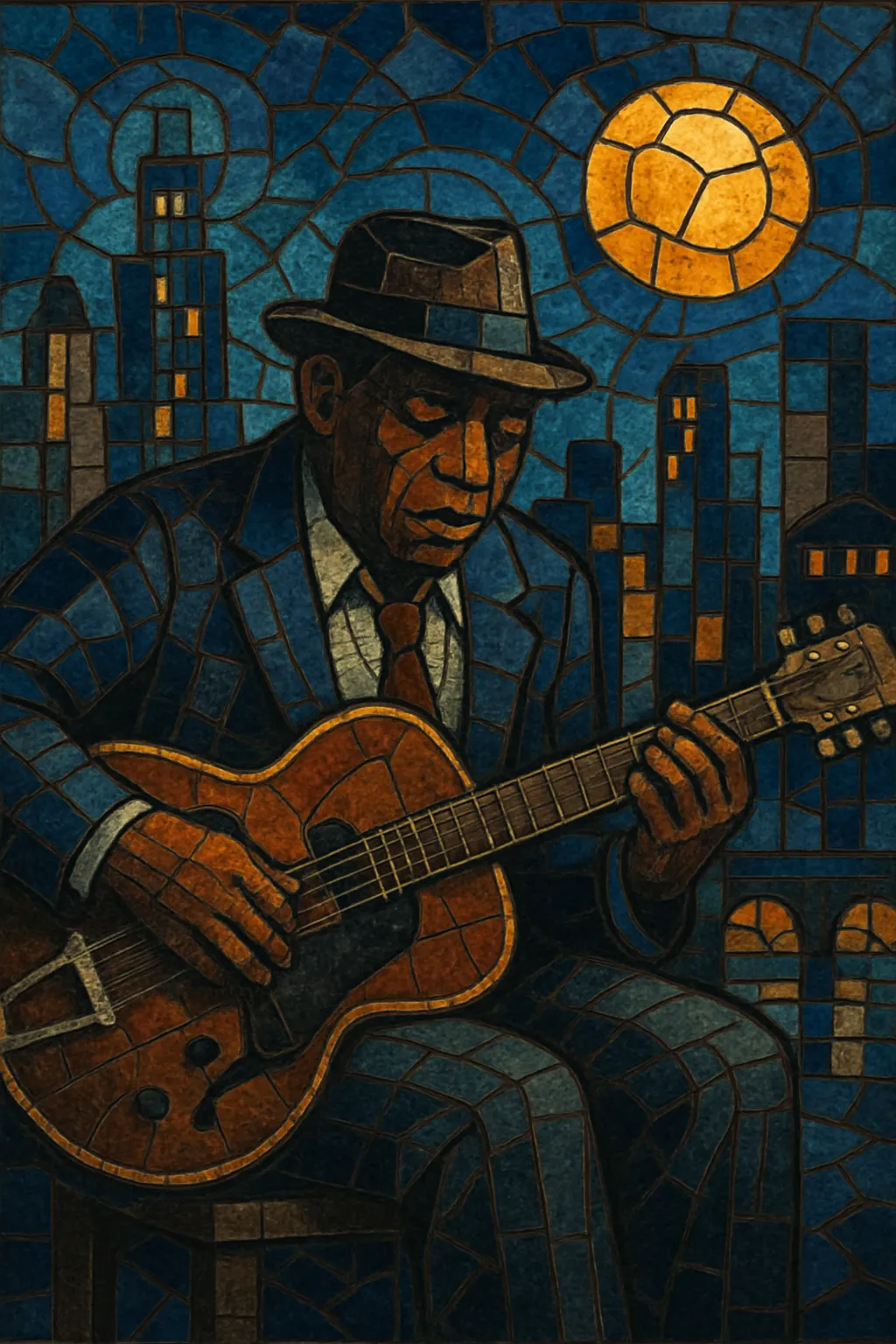
Chicago blues is an electrified, urban form of the blues that took root on Chicago’s South and West Sides during the Great Migration.
Built on the 12‑bar blues and I–IV–V harmony, it is marked by amplified guitar, amplified harmonica ("harp"), piano, bass, and drum kit, with a swinging shuffle feel and a strong backbeat. Riffs, call‑and‑response between voice and lead instruments, and terse, memorable hooks are central.
Lyrically, Chicago blues pivots from rural imagery to city life—work, love, nightlife, tough luck, and resilience—delivered with grit, wit, and emotional directness. The sound is raw yet powerful, merging Delta roots with urban rhythm sections and studio production that foregrounds groove and bite.
Large waves of African Americans moved from the rural South to Chicago, bringing Delta and country blues traditions with them. In noisy clubs and street markets like Maxwell Street, musicians amplified guitars and harmonicas to cut through the din. The 12‑bar form, blue notes, and slide guitar of the Delta tradition met urban rhythm sections—piano, bass, and drums—laying the foundation for a harder, electrified sound.
By the mid‑to‑late 1940s, amplification defined the style. Independent labels—most famously Aristocrat/Chess, alongside Vee‑Jay and Cobra—recorded artists such as Muddy Waters, Howlin’ Wolf, Little Walter, and Jimmy Reed. Songwriters and bandleaders like Willie Dixon supplied enduring repertoires and arrangements. The amplified harmonica became a signature voice, and shuffles, stop‑time figures, and riff‑based grooves crystallized the Chicago sound heard in clubs on the South and West Sides.
Chicago blues catalyzed the British blues boom; artists like The Rolling Stones, Yardbirds, and John Mayall popularized Chicago repertoire and tone, feeding back global attention to the original musicians. Locally, stylists such as Otis Rush, Magic Sam, and Buddy Guy developed a tougher, more modern guitar language that bridged into blues rock and psychedelia.
Festivals (notably the Chicago Blues Festival), club circuits, and reissue programs sustained the tradition. New generations draw on classic Chess aesthetics while updating production, harmony, and live performance energy. The essential elements—amplified guitar and harp, shuffles and stomps, 12‑bar forms, and vivid street‑level storytelling—remain core to Chicago’s musical identity and to blues worldwide.

